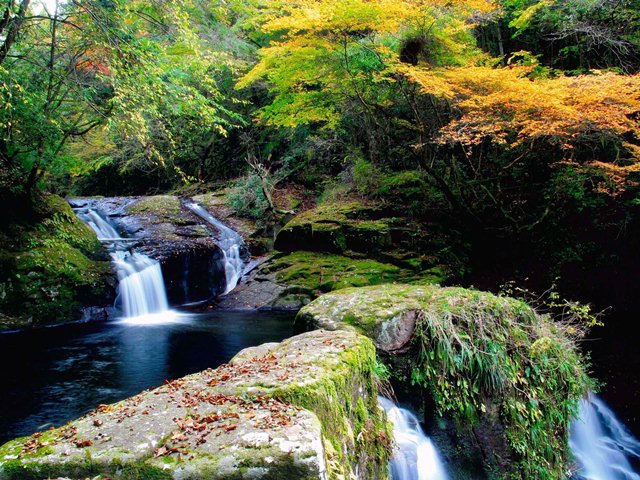
Located upstream of the Taki River, which flows out of the Nabari River, the 48 Akame Wateralls are a series of waterfalls of various sizes. The beautiful scenery created by the erosion of the Murou pyroclastic flow deposits has been designated as the Murou Akame Aoyama National Park in 1970, and has also been selected as one of the 100 best Japanese waters, 100 best Japanese falls, 100 best forest bathing, 100 best walking trails, and so on.
Akame 48 Waterfalls is rich in nature and is home to many different types of plants and creatures. The Japanese giant salamander, a special natural treasure, is particularly famous, and can be seen up close at the Japan Giant Salamander Center located at the entrance to the hiking trail. Akame has also been famous as a place for ascetic practices since ancient times, and was founded in the Nara period (710-794) by Enno Ozuno as a place for ascetic practices (ascetic practices to attain enlightenment in the mountains). The legend goes that the name was derived from an encounter with Fudo Myoo riding on a red-eyed (赤目, Akame in Japanese) ox during his ascetic training. However, there is no evidence to support this legend, and it is thought that the name may have been derived from the red-eyed Fudo Myoo at Enjuin Temple, located at the entrance to the waterfall (according to a local explanation board, etc.).
In modern times, the “Ninja Training Village The Akame 48 Waterfalls”, where visitors can experience ninja training at Akame 48 Waterfalls, a place of ascetic practices, has been established, making it easy to enjoy a ninja experience. The Akame Natural History Museum, which opened in 2021, is located at the entrance to the Akame 48 Waterfalls, where visitors can learn about nature, history, culture, and materials through display panels and digital signage (an electronic display board).Although a fee is required to enter Akame 48 Waterfalls, the hiking trails are managed by the Akame 48 Falls Gorge Conservation Association, and visitors can use the trails safely.